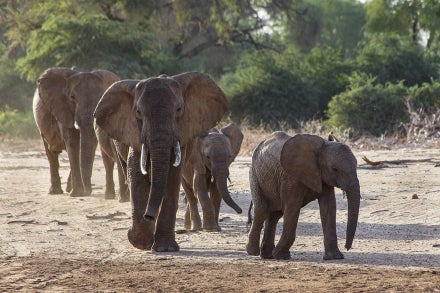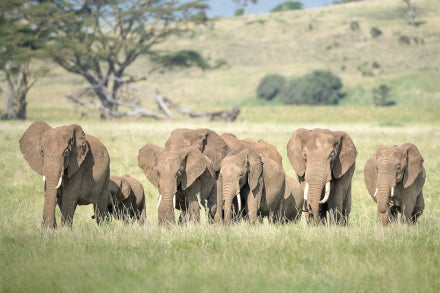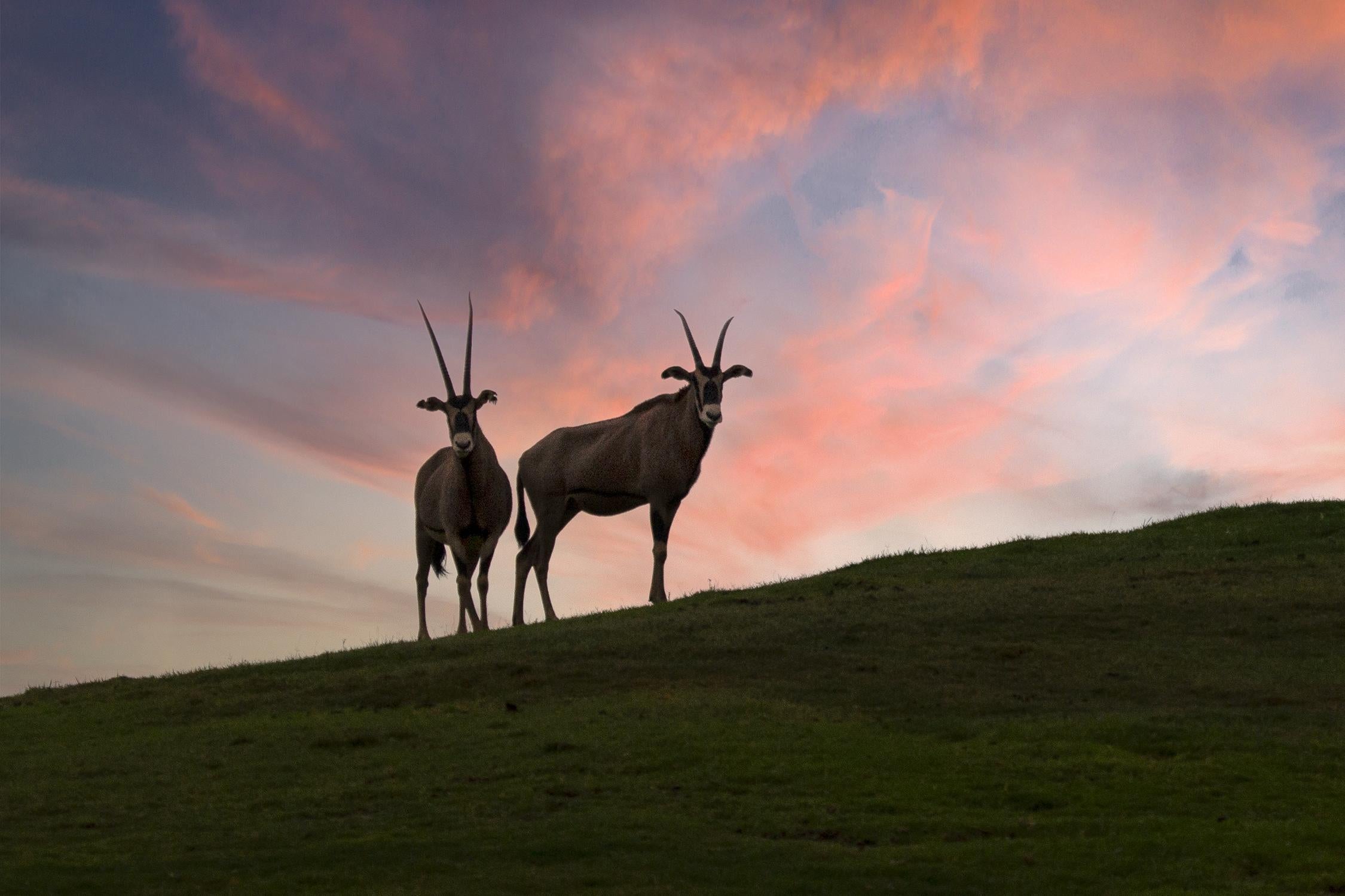
The San Diego Zoo Safari Park is known for some pretty incredible experiences for our guests during our operating hours. What folks may not know is that when our front gates close for the night, a whole other world is just getting started. We have a dedicated wildlife care team that works during nighttime hours, and they have a lot to do after the sun goes down.
Ready for Anything—and Anyone
As the sun sets on the west side of the Safari Park, we begin to see and hear a whole new array of animal activity. We load up our vehicles with supplies for working at night, including red LED flashlights, binoculars, night vision thermal monoculars, an iPad, and even a drone! A jacket, snacks, and a warm drink are also staples, as some nights can dip into the 20s in the San Pasqual Valley.
We start our patrols around the 1,800 acres to check on the more than 3,000 animals that live at the Safari Park. During that drive we might see a newborn Cape buffalo calf nursing, a newly introduced male Angolan roan antelope mingling with his herd, or the trio of lionesses out patrolling Lion Camp.
Making our way from the wildlife habitats toward the more undeveloped part of the Safari Park, known as the Biodiversity Reserve, we observe a lot of other native species that also call the Safari Park home. In the summer months we might see the rosy boa and tarantulas on the ground, and even Yuma myotis bats flying around. In the spring we see spadefoot toads and swallows, and in the case of baby barn owls, we hear them—they are very vocal chicks! Year-round we see other local species like opossums, kangaroo rats, white-tailed deer, skunks, raccoons, the occasional bobcat, and an even bigger feline.
One of the most elusive animals out here is the mountain lion. They are incredibly powerful and stealthy hunters and have the largest range of any mammal (other than humans). Because of this range, they also have more names than any other animal— they’re known locally as mountain lions, cougars, or pumas.
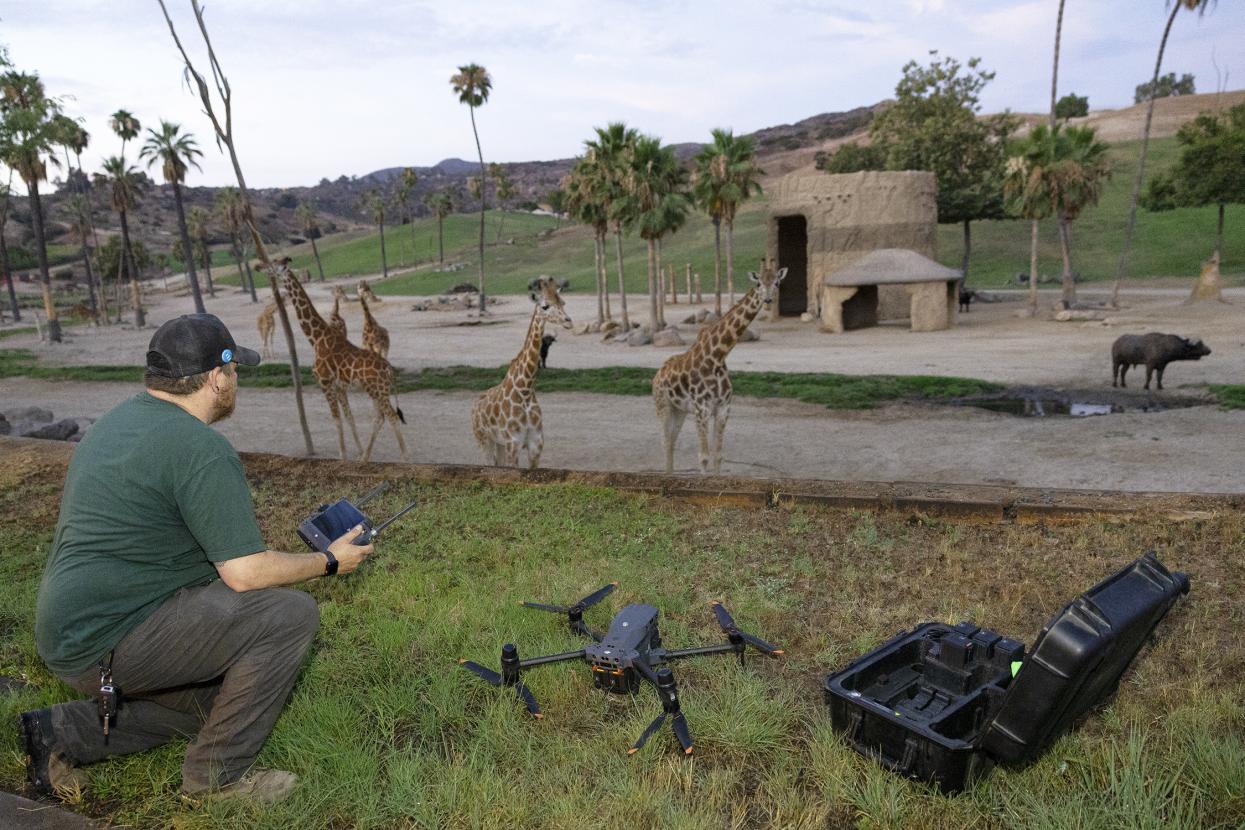
Author Ollie Zirbel readies a drone to be used to unobtrusively monitor activity in the Safari Park's field habitats.
Helping the Locals
In some instances, native wildlife can end up in our care. After working with University of California, Davis, in 2022, we received a permit to collar a female mountain lion that had been hunting native mule deer. Late in 2023, we learned this female had been killed while predating livestock. The collar helped identify her and aided in the rescue of her three young cubs. The Safari Park was asked by the U.S. Department of Agriculture to provide a home for the trio, who are now ambassadors for their species.
The overnight wildlife care team has a unique opportunity to manage the three young mountain lions on a schedule that is more in tune with their nocturnal nature. When arriving at their habitat, wildlife care specialists are greeted with lots of vocalizations, which at their age (eight months) signifies their socialization is progressing nicely. Between the three of them, we hear a few different sounds while we get their diet prepped for the night. They are eating a variety of items at this stage, and we do vary the type of food, the amount, when it’s offered, and how it’s presented. We work with them individually for relationship building and training, and we hold group feeds where we might put three racks of ribs in a pile with antlers or hide some rabbits in a pile of hay, mimicking the natural food source these local cats would find. Seeing how they navigate those group feeds and develop socially as a trio has been one of my favorite parts of working with them and watching them grow up.
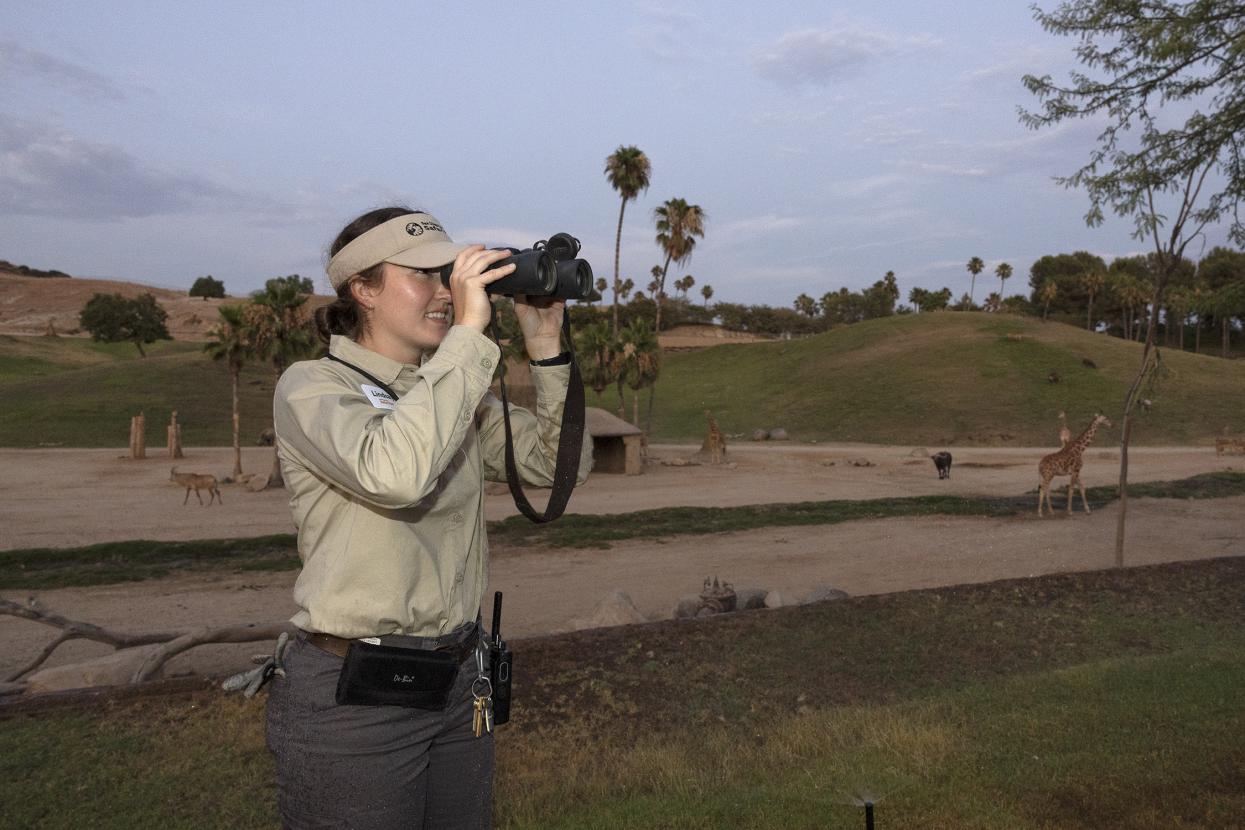
Wildlife care specialist Lindsay Stoner observes wildlife at dusk in one of the Safari Park's field habitat; this is a time when some animals will start settling down, while others are becoming more active.
Shifting Gears—and Species
The three mountain lion cubs are amazing, but we have lots of other wildlife to check on during the night. One of the unique characteristics of the overnight wildlife care team is that no two nights are the same—the cubs are the only constant part of our shifts. Some nights we might be checking the camera system around the Safari Park to help monitor native species. We may help train a rhino for an early morning move to another facility or provide additional attention to a porcupine. We can even record what a group or individual animal is doing and where they spend time in their spaces—there’s an app for that, ZooMonitor, which puts all that data in our hand via a tablet.
We also assist with diet prep for a variety of species, whether that means bottle feeding an animal that needs overnight care or checking on a newly hatched kiwi chick. Working with our partners from the Wildlife Health team, we sometimes check on medical cases or help monitor expectant mothers as well. We even get to interact with some of our guests who are part of a wedding or birthday party, or Roar & Snore Safari campers. Fostering the connection between our guests and Rodrigues flying foxes and explaining about our native bat population is a highlight of our work at the Safari Park. Watching a guest see an okapi for the first time, or their excitement as they snack on s’mores and listen to the elephant herd crunching browse—life-changing events for everyone.
There’s a lot that goes on after the sun goes down at the Safari Park. Come visit the nocturnal world here at the San Diego Zoo Safari Park, and get inspired to learn more about your own native animals. I welcome you to join in a nocturnal visit here, and if you do, please be sure to say hello!


